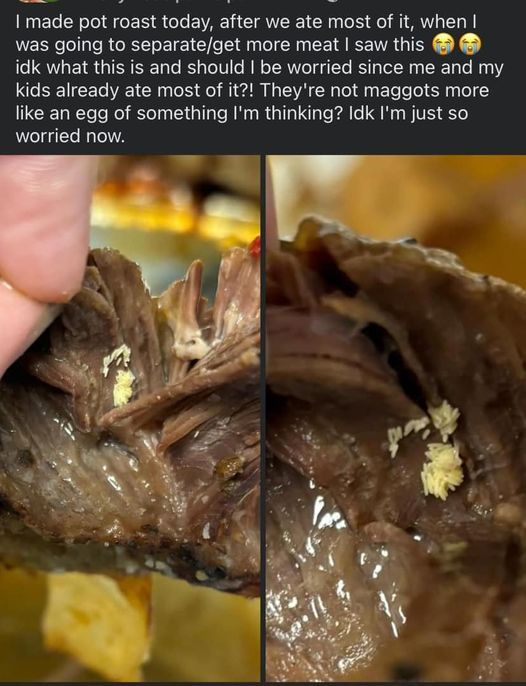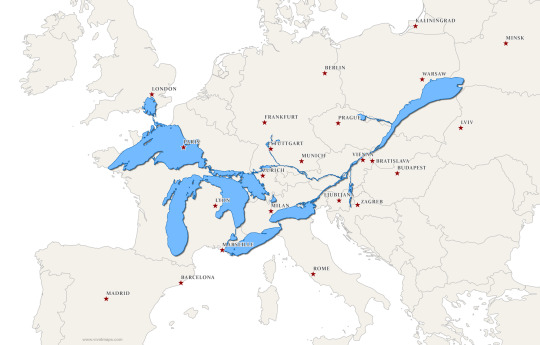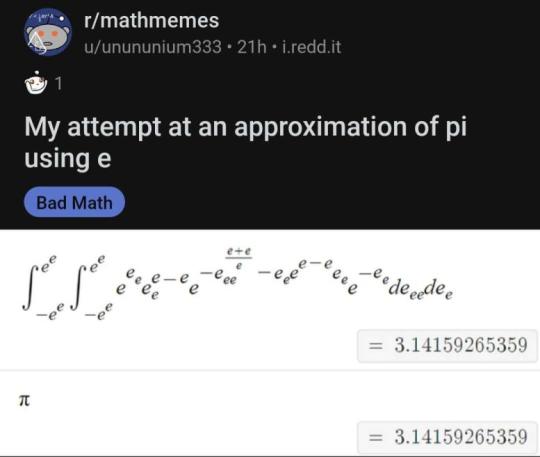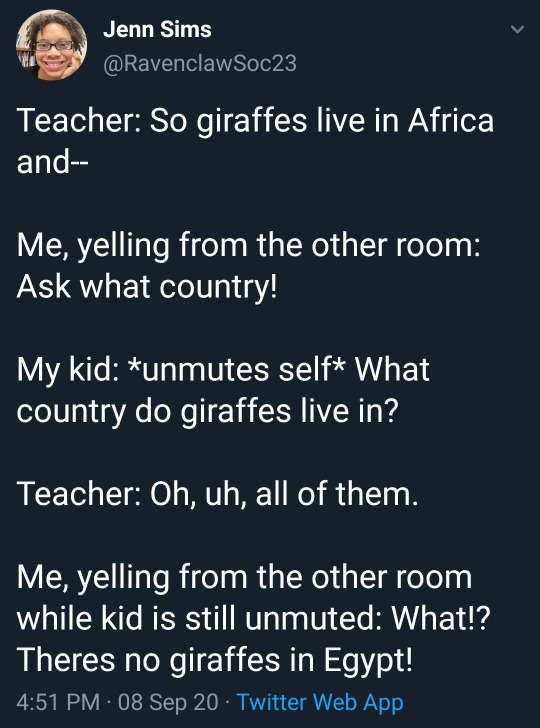Don't wanna be here? Send us removal request.
Text
So it's come my attention that there are a lot of students, particularly in humanities and social sciences disciplines, who need to hear this, so here goes:
Do the readings.
Oh my God, just do the readings. I promise, it gets easier once you get into the habit of it.
What makes a good student? Doing the readings. Literally just doing the readings is enough to make you a good student.
15K notes
·
View notes
Text
"it's concerning if university students are genuinely struggling to read full adult-level books for class" and "don't overstate the reporting of a single news article" and "if this shift is genuinely real, it's reflective of broad curriculum changes in lower education levels, probably at least in part due to remote schooling during COVID, and doesn't mean the new generation is being willfully Stupid and Vapid" and "when reading for personal pleasure people should read whatever they like without shame" and "reading from a broad variety of genres, styles, and authorial backgrounds will improve your understanding of both literature and the real world" and "actively mocking people for their tastes in books does not encourage them to become more adventurous you're just being mean" and also "but seriously adult books are not just boringly pretentious nothingburgers padded with pointless sex scenes, and claiming they are just shows how little you've read" all can and should co-exist.
58K notes
·
View notes
Text
a favorite memory:
when i was in fifth grade, we read a book in school where a young girl in prehistory finds a dolphin skeleton. and i was so taken in by the description of the bones, how there were fingers in the fins, that i came home to my dad and told him "i think that when humans came out of the oceans, dolphins did, too, but they went back in."
my dad went upstairs and came back with an issue of analog magazine, the sci-fi digest he read religiously, and handed it to me.
"here," he said. "you're ready for this."
44K notes
·
View notes
Text
I think it’s neat that the Phineas and Ferb characters aren’t into summer because they dislike learning or math or anything like that. These kids actually LOVE math & science & the arts. They love summer because it gives them more free time to work on personal projects using those skills
778 notes
·
View notes
Text
I want this man’s assignments so I can learn from them.
ftr, I am obsessed with Tim Walz’s genocide curricula
587 notes
·
View notes
Text
I'd love it if there was a Norse myth adaptation where Loki, Heimdall and Thor have the dynamic of Daffy Duck and Bugs Bunny fucking around with Yosemite Sam/Elmer Fudd to inconvenience/harm each other. Thor is the Yosemite Sam/Elmer Fudd of those.
Because people forget that Heimdall is the one that suggested Thor dress up as Freyja and not Loki. Loki just gladly joined in the dress up.
EDIT: This of course also works with Odin too. As both Loki and Odin are a bunch of shifty bastards.
youtube
10 notes
·
View notes
Text
Unfortunately, I don’t have citations, but I have heard about the same phenomenon through Nat Geo Live presentations in the Amazon and Serengeti. Most individuals who are poachers or use slash-and-burn farming are doing this out of survival, not ignorance or greed. They have families to feed and children who will starve if they don’t find food or money. As OP said, fixing the human suffering fixes the conservation issue and is a win-win, while preaching conservation to starving people does nothing.
But on top of that, you know who the most ardent conservationists are once security has been achieved? The people who had once been forced to poach or slash-and-burn to survive. You know who’s great at tracking down gorilla poachers? Ex-poachers. Who’s good at understanding and advocating for people forced to do these things to survive? Ex-poachers. Who can convince others to take a chance on finding a better way to survive? Same answer.
It is win-win-win. As ecologists, conservationists, and environmentalists we must get out of our ivory towers of knowledge, stop carrying them into the field, and remember humans are part of the ecosystem too. And that sustainable change will never happen if human needs aren’t addressed.
When I was in vet school I went to this one lecture that I will never forget. Various clubs would have different guest lecturers come in to talk about relevant topics and since I was in the Wildlife Disease Association club I naturally attended all the wildlife and conservation discussions. Well on this particular occasion, the speakers started off telling us they had been working on a project involving the conservation of lemurs in Madagascar. Lemurs exist only in Madagascar, and they are in real trouble; they’re considered the most endangered group of mammals on Earth. This team of veterinarians was initially assembled to address threats to lemur health and work on conservation solutions to try and save as many lemur species from extinction as possible. As they explored the most present dangers to lemurs they found that although habitat loss was the primary problem for these vulnerable animals, predation by humans was a significant cause of losses as well. The vets realized it was crucial for the hunting of lemurs by native people to stop, but of course this is not so simple a problem.
The local Malagasy people are dealing with extreme poverty and food insecurity, with nearly half of children under five years old suffering from chronic malnutrition. The local people have always subsisted on hunting wildlife for food, and as Madagascar’s wildlife population declines, the people who rely on so-called bushmeat to survive are struggling more and more. People are literally starving.
Our conservation team thought about this a lot. They had initially intended to focus efforts on education but came to understand that this is not an issue arising from a lack of knowledge. For these people it is a question of survival. It doesn’t matter how many times a foreigner tells you not to eat an animal you’ve hunted your entire life, if your child is starving you are going to do everything in your power to keep your family alive.
So the vets changed course. Rather than focus efforts on simply teaching people about lemurs, they decided to try and use veterinary medicine to reduce the underlying issue of food insecurity. They supposed that if a reliable protein source could be introduced for the people who needed it, the dependence on meat from wildlife would greatly decrease. So they got to work establishing new flocks of chickens in the most at-risk communities, and also initiated an aggressive vaccination program for Newcastle disease (an infectious illness of poultry that is of particular concern in this area). They worked with over 600 households to ensure appropriate husbandry and vaccination for every flock, and soon found these communities were being transformed by the introduction of a steady protein source. Families with a healthy flock of chickens were far less likely to hunt wild animals like lemurs, and fewer kids went hungry. Thats what we call a win-win situation.
This chicken vaccine program became just one small part of an amazing conservation outreach initiative in Madagascar that puts local people at the center of everything they do. Helping these vulnerable communities of people helps similarly vulnerable wildlife, always. If we go into a country guns-blazing with that fire for conservation in our hearts and a plan to save native animals, we simply cannot ignore the humans who live around them. Doing so is counterintuitive to creating an effective plan because whether we recognize it or not, humans and animals are inextricably linked in many ways. A true conservation success story is one that doesn’t leave needy humans in its wake, and that is why I think this particular story has stuck with me for so long.
(Source 1)
(Source 2- cool video exploring this initiative from some folks involved)
(Source 3)
36K notes
·
View notes
Text
Note to self.
I LOVE THESE TYPES OF DIAGRAMS










I LOVE LEARNING VISUALLY AND I LOVE PLANET EARTH
193 notes
·
View notes
Text
I know exactly what will happen: everything collapses. It is 100% true.

Teachers will tell you this is true
773 notes
·
View notes
Text
Hi! I have a biology degree, which means that I had to take a mandatory genetics class. Guess what our term project was? If you guessed recreating Morgan’s fruit fly lab, you’d be correct.
So basically, I absolutely will co-sign the statement “I have very bad news about fruits and vegetables.” Very, very bad news.

This is going around facebook and mostly being shared as "WHY YOU SHOULDN'T EAT MEAT" but these are fresh, brand new obviously not roasted fly eggs. A fly landed on someone's food and laid all its eggs after said food had been sitting out. That, or these photos are of meat directly out of the garbage, and it certainly looks pretty slimy. Not to mention, if you're scared of eating insect eggs (or whole insects), and especially maggots, I have bad news about almost all fruits and vegetables
420 notes
·
View notes
Photo

Addendum: same map with the Haudenosaunee Confederacy shown in red.

The Great Lakes and Saint Lawrence River superimposed on a map of Europe
110K notes
·
View notes
Text
"In a historic “first-of-its-kind” agreement the government of British Colombia has acknowledged the aboriginal ownership of 200 islands off the west coast of Canada.
The owners are the Haida nation, and rather than the Canadian government giving something to a First Nation, the agreement admits that the “Xhaaidlagha Gwaayaai” or the “islands at the end of world,” always belonged to them, a subtle yet powerful difference in the wording of First Nations negotiating.
BC Premier David Eby called the treaty “long overdue” and once signed, will clear the way for half a million hectares (1.3 million acres) of land to be managed by the Haida.
Postal service, shipping lanes, school and community services, private property rights, and local government jurisdiction, will all be unaffected by the agreement, which will essentially outline that the Haida decide what to do with the 200 or so islands and islets.
“We could be facing each other in a courtroom, we could have been fighting each other for years and years, but we chose a different path,” said Minister of Indigenous Relations of BC, Murray Rankin at the signing ceremony, who added that it took creativity and courage to “create a better world for our children.”
Indeed, making the agreement outside the courts of the formal treaty process reflects a vastly different way of negotiating than has been the norm for Canada.
“This agreement won’t only raise all boats here on Haida Gwaii – increase opportunity and prosperity for the Haida people and for the whole community and for the whole province – but it will also be an example and another way for nations – not just in British Columbia, but right across Canada – to have their title recognized,” said Eby.
In other words, by deciding this outside court, Eby and the province of BC hope to set a new standard for how such land title agreements are struck."
-via Good News Network, April 18, 2024
18K notes
·
View notes
Text
84K notes
·
View notes
Text
Hey all, I've added a bullet point summary to help everyone who may struggle reading the entire essay.
Why Is It Hard To Focus With ADHD?
Summary
ADHD affects focus by disrupting regulation within the brain's networks.
The Default Mode Network (DMN) activates during rest or daydreaming but is normally turned off when concentrating.
The thalamus regulates and coordinates information between the brain’s network.
In ADHD, regulation from the thalamus is weakened and the DMN remains active even during tasks, leading to distractions.
Medications like Ritalin may enhance the thalamus’ ability to regulate the DMN activity
Self-monitoring strategies, such as setting timers or using audio cues, help individuals refocus attention during tasks without trying to prevent DMN intrusions.
Introduction
This was an assignment I worked on for my Master's of Education that I thought other's might benefit from (and Tumblr specifically would be interested in). The goal was to create a handout that our students could use to understand behaviour, so I targeted this at my high school biology students.
Standard disclaimer that ADHD (which I don't have but have something close to it) is a complex system within the brain. We don't fully understand it. This is just a glimpse into one of many facets of the disorder.
Brain Networks
Attention Deficit Hyperactive Disorder is a complicated condition whose biology is not fully understood. In High School, we often describe brain functions as being based in the cerebral lobes, but this is not the full truth. In reality, the brain is made up of a series of networks that are in constant communication with each other. By sending signals back and forth along various networks, the brain creates the behaviours of all humans and many animals. It is currently believed that ADHD is partially the result of miscommunications within these networks (Fassbender et al 2009; Rubia, 2018).
The Default Mode Network
One network within the brain is the Default Mode Network (DMN), which takes control when the brain doesn’t have anything to focus on, such as when the body is at rest or the mind is wandering (Fassbender et al, 2009). The DMN is largely based in the medial regions of the frontal, parietal, and temporal lobes, where the left and right hemispheres face each other (Fassbender et al 2009; Cunningham et al, 2017; Rubia, 2018). While the workings of this network aren’t fully understood, it is believed to be involved in making connections between unrelated memories. This is the basis of reflection and self-awareness, allowing the brain to see patterns across past events, as well as predict what may happen in the future (Cunningham et al, 2017; Li et al, 2021; Schwabe et al, 2022).

Image from Neuroscientifically Challenged, who also have a great article on the DMN
Attention Shifting
Normally, the DMN is only active when the brain is at rest. When the brain has something to focus on, the DMN deactivates and another neural network takes its place (Fassbender et al, 2009). If the brain needs to focus on a particular task, the Executive Control Network takes over, directing the brain to do that specific job. If an environmental stimulus catches the brain’s attention, the Salience Network takes over instead, prompting the brain to evaluate if it is interesting or dangerous (Schwabe et al, 2022). In both cases, regions of DMN become less active, which means the network isn’t as effective at doing its job. This may sound like a bad thing, but it is actually very good. It allows the brain to focus on the task at hand and makes it much less likely that random, unrelated thoughts will intrude when a person is trying to concentrate.
The DMN & ADHD
The mind wanders when the DMN is active and able to look for connections between memories and in most people, this happens when the brain is not occupied. In a classroom or work setting, this means they only start daydreaming when they aren’t engaged by what they are doing and stop paying attention to it. While this can happen to people with ADHD, it is not always true. In ADHD, the DMN does not fully deactivate when other networks in the brain take over. Instead, portions in the frontal and parietal lobes remain active (Fassbender et al, 2009; Christakou, 2013; Rubia, 2018; Salvart et al, 2018). Despite “inattentiveness” being a typical description of students with ADHD, their attention can wander even when they are fully engaged in a task because their DMN is still active. Their distractibility is not a matter of effort or attitude, but the result of contradictory signals within their brain, telling them to pay attention and let their mind wander at the same time.
The Thalamus & ADHD
While it is not always included in the DMN, there is evidence that the thalamus is strongly connected to the network (Cunningham et al, 2017; Li et al, 2021). While the thalamus is usually thought of as a relay for the senses, it is also involved in regulating and coordinating information throughout the brain. The connections allowing that regulation to take place are weakened in cases of ADHD (Qiu et al, 2010). It is possible that those weaker connections mean the signals telling the DMN to deactivate when the brain is trying to focus are not as strong, making it much more difficult.
Why Does Ritalin Help?
Methylphenidate, better known by its brand name Ritalin, is one of the best known ADHD medications. Ritalin is a stimulant, which strengthens signals within the brain, ironically causing the default mode network to be less active. Why this happens is still being studied, but it appears that Ritalin helps stimuli be more attention-grabbing, makes the DMN regulate itself better, and supports the thalamus’ ability to regulate the DMN (Demiral et al, 2018; Santos et al, 2019). Taken together, these effects can help decrease the DMN’s intrusions in a person's thought process, making them less distractible.
Supports
If you struggle with attention due to ADHD, self-monitoring is an effective strategy to help keep yourself on task. The goal with self-monitoring is not to prevent the mind from wandering, but to create awareness of when your mind starts to wander so you can refocus your attention. One common strategy is to set a timer or use another regularly occurring audio cue. When you hear the cue, record on a cue card whether you are on task or off task, then return to the work you are supposed to be doing (Rief, 2016). Pomodoro soundtracks, many of which are available on Spotify and Youtube, would also work with this strategy because they have audio cues every 25 or 50 minutes. This strategy is effective because it doesn’t try to prevent the DMN from intruding, but on refocusing you so you can achieve the goal you have set out to complete.
References
Christakou, A., Murphy, C. M., Chantiluke, K., Cubillo, A. I., Smith, A. B., Giampietro, V., Daly, E., Ecker, C., Robertson, D., Murphy, D. G., & Rubia, K. (2013). Disorder-specific functional abnormalities during sustained attention in youth with attention deficit hyperactivity disorder (ADHD) and with autism. Molecular Psychiatry, 18, 236–244. https://doi.org/10.1038/mp.2011.185
Cunningham, S. I., Tomasi, D., & Volkow, N. D. (2016). Structural and functional connectivity of the precuneus and thalamus to the default mode network. Human Brain Mapping, 38(2), 938–956. https://doi.org/10.1002/hbm.23429
Demiral, Ş. B., Tomasi, D., Wiers, C. E., Manza, P., Shokri-Kojori, E., Studentsova, Y., Wang, G.-J., & Volkow, N. D. (2018). Methylphenidate’s effects on thalamic metabolism and functional connectivity in cannabis abusers and healthy controls. Neuropsychopharmacology, 44(8), 1389–1397. https://doi.org/10.1038/s41386-018-0287-2
Fassbender, C., Zhang, H., Buzy, W. M., Cortes, C. R., Mizuiri, D., Beckett, L., & Schweitzer, J. B. (2009). A lack of default network suppression is linked to increased distractibility in ADHD. Brain Research, 1273, 114–128. https://doi.org/10.1016/j.brainres.2009.02.070
Li, J., Curley, W. H., Guerin, B., Dougherty, D. D., Dalca, A. V., Fischl, B., Horn, A., & Edlow, B. L. (2021). Mapping the subcortical connectivity of the human default mode network. NeuroImage, 245, 118758. https://doi.org/10.1016/j.neuroimage.2021.118758
Qiu, M.-guo, Ye, Z., Li, Q.-yu, Liu, G.-jiu, Xie, B., & Wang, J. (2010). Changes of brain structure and function in ADHD children. Brain Topography, 24(3-4), 243–252. https://doi.org/10.1007/s10548-010-0168-4
Rief, S. F. (2016). How to reach & teach children & teens with Add/Adhd. Jossey-Bass, a Wiley Brand.
Rubia, K. (2018). Cognitive neuroscience of attention deficit hyperactivity disorder (ADHD) and its clinical translation. Frontiers in Human Neuroscience, 12. https://doi.org/10.3389/fnhum.2018.00100
Salavert, J., Ramos-Quiroga, J. A., Moreno-Alcázar, A., Caseras, X., Palomar, G., Radua, J., Bosch, R., Salvador, R., McKenna, P. J., Casas, M., & Pomarol-Clotet, E. (2015). Functional imaging changes in the medial prefrontal cortex in adult ADHD. Journal of Attention Disorders, 22(7), 679–693. https://doi.org/10.1177/1087054715611492
Santos, P. H., Gonçalves, R., & Pedroso, S. (2019). ¿Cómo afecta el metilfenidato al circuito de activación por defecto? Revisión Sistemática. Revista De Neurología, 68(10), 417. https://doi.org/10.33588/rn.6810.2018487
Schwabe, L., Hermans, E. J., Joëls, M., & Roozendaal, B. (2022). Mechanisms of memory under stress. Neuron, 110(9), 1450–1467. https://doi.org/10.1016/j.neuron.2022.02.020
369 notes
·
View notes


